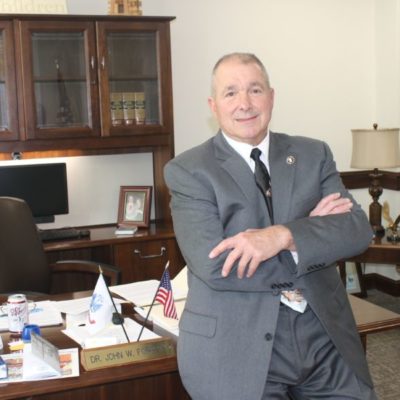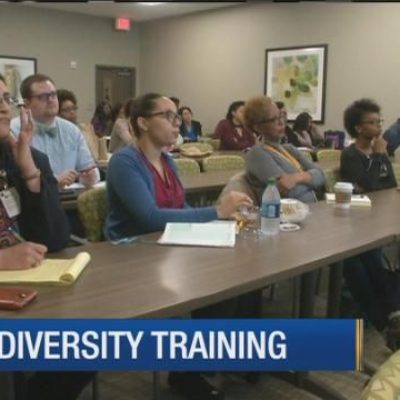College readiness: How Cheatham, Robertson and Sumner Schools stack up
Large numbers of students in Tennessee are not ready for college, according to newly released state data.
The data shows how prepared public high school students are for college in math and reading and how many need remedial coursework once they enter a community college or public university in Tennessee.
Overall, it paints a grim picture of the state’s continued challenges in improving K-12 education and is especially telling in some areas, where there are vast disparities between district-level performance and individual high schools within the district.
In Middle Tennessee, some districts reported lower remediation rates than the state average while others, sometimes in neighboring counties, were much higher.
Take Robertson, Cheatham and Sumner Schools for example.
Three neighbors, three outcomes
Statewide data shows that 46 percent of the roughly 33,000 high school graduates at Tennessee’s public colleges in 2016-17 needed remedial efforts in math.
And 33 percent needed remedial efforts in reading.
Robertson County Schools was below the state average with 41.4 percent of its 407 graduates needing remedial efforts in math. The number was even lower for reading, with 27.9 percent in need of remediation.
Sumner Schools was also below the state average in both areas, and there were also more graduates going on to higher education in Sumner County than there were in Robertson County. In math, Sumner County sent 44 percent of its 1,212 graduates to college needing remedial coursework. In reading, 25.4 percent needed remedial coursework.
It was a different story for Cheatham County Schools.
Of the district’s 243 graduates, 58.3 percent, or 134, needed remediation in math, and 36.1 percent, or 83, needed remediation in reading.
In a statement issued Thursday, Cheatham County Schools said its focus is to ensure that all students are college or career ready and preparing students for success begins in the earlier grades.
“We have concentrated our efforts on early literacy and math instruction, which ultimately prepares students for academic success in middle and high school,” the statement reads. “We are committed to implementing programs that help our students be successful. For example, at some of our high schools, we offer an after-school tutoring program in which teachers work one-on-one with students who need extra instruction.
“We have seen significant academic progress with this program.”
Other efforts are also taking place, locally.
There are regular scheduled meetings in Cheatham County between district-level curriculum coordinators and building-level academics and principals. Together, they review and analyze data, “to determine how teachers can be better effective in the classroom and how students can be more prepared for academic achievement,” the statement said.
Improvement takes time
The data, released to the state Senate Education Committee Wednesday and obtained by the USA TODAY NETWORK – Tennessee, shows that while some public high schools prepare their students extraordinarily well for college, others are facing profound challenges.
This is especially true in economically distressed areas as well as suburban and rural areas of the state, the data shows.
Students are deemed to need remedial efforts on either math or reading when they score 18 or below on the ACT subtest, and they have a lower chance of graduating from college if they need remediation, according to the state.
State Sen. Jon Lundberg, R-Bristol, who requested the data from the Tennessee Higher Education Commission, said the numbers are just too high.
“And that is only the folks that are college bound,” Lundberg said. “If you included every student, that number would be higher.”
The data does not include students who attend a private or out-of-state college or choose not to attend college.
The state’s improvements in K-12 education have masked some schools’ struggles, Lundberg said.
The information is a bombshell, he said, that makes him rethink the state’s K-12 improvements compared with the rest of the nation. Overall, Tennessee has been one of the fastest-improving states in national education rankings.
The data comes as the state is sending more students than ever to college free of tuition and fees through the Tennessee Promise and Tennessee Reconnect programs. The state also has a goal of equipping 55 percent of Tennesseans with a degree or certificate by 2025.
Lundberg said if the state wants to hit its Drive to 55 goals, there needs to be a hard look at what is going on in education and the state’s teacher training programs.
“Everyone has to own up to this that we have an issue,” Lundberg said. “Every district and every school. This is the type of data that every principal wants to see — how do we stack up.”
The high school level
Looking at the data by district and school level shows even more disparities across the state.
And smaller schools had higher swings in the percentage of students needing remediation, according to Emily House, the chief policy and strategy officer for the Tennessee Higher Education Commission.
In mostly rural Cheatham County, this seems partly true.
Sycamore High School sent 102 students to college followed by Cheatham County Central High School with 74 and Harpeth High School with 67.
Harpeth recorded the lowest numbers in both categories: 49.2 percent in math and 28.8 percent in reading. Sycamore and Cheatham County Central both finished higher, with Sycamore posting 59 percent in math and 40 percent in reading and Cheatham County Central posting 64.8 percent in math and 36.6 percent in reading.
In Robertson County, also mostly rural, the high school data was a mixed bag.
Springfield High School sent the highest number of graduates to college and posted the highest percentage of students in need of remediation in reading.
Of the school’s 111 graduates, 37.7 percent, 40 students, needed remedial coursework in reading while 47.2, 50 students, needed remedial coursework in math.
Meanwhile, Jo Byrns High School, one of the smallest schools in Robertson County, posted the best percentages in both reading and math. Of its 31 graduates, 33.3 percent, or 10 students, needed remedial math coursework while 13.3 percent, or 4 students, needed remedial reading coursework at the college level.
Robertson County Director of Schools Chris Causey highlighted the district’s intervention programs for reading and math, which has resulted in an increase in college readiness for students as compared with just a few years ago, he said.
The director also noted that the numbers of students hitting ACT benchmarks has also risen steadily, according to the district’s data.
“We still have a way to go, but the trends are definitely going in the right direction,” Causey said. “In the future, as our students journey to post-secondary opportunities, this should only get better.”
Robertson County is home to five traditional high schools and one alternative program.
Data was not available for the alternative school.
Results varied at the other three schools, according to the state’s data.
Greenbrier High School sent 108 graduates to college, White House Heritage High sent 102 graduates to college and East Robertson High sent 51 graduates to college, the data shows.
East Robertson posted the highest percentage of students needing remedial math coursework, while Greenbrier was almost dead even with Jo Byrns in performance and White House Heritage was in the middle.
At East, 52.1 percent of the graduates, 25 students, needed remediation in math and 22.9 percent, 11 students, needed remediation in reading.
At Greenbrier, 33.7 percent, 34 students, needed remediation in math and 18.8 percent, 19 students, needed remediation in reading.
And, at White House Heritage, 39.2 percent, 40 students, needed remediation in math and 32.4 percent, 33 students, needed remediation in reading.The Tennessean’s Duane Gang, Jason Gonzales and Joel Ebert contributed to this report. Reach Nicole Young at 615-306-3570 or nyoung@tennessean.com.
[Read more at the Tennessean]


